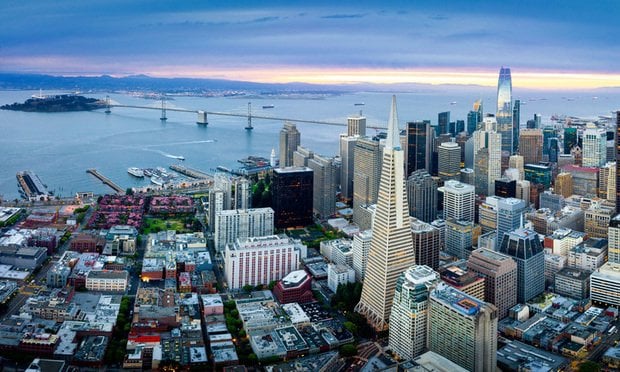 Gladstone says the board of supervisors may vote on the plan before Thanksgiving.
Gladstone says the board of supervisors may vote on the plan before Thanksgiving.
SAN FRANCISCO—Those who follow the fastest-growing US cities know that San Francisco has been a leader in population growth, growth in the number of businesses and growth in office construction since 2000. The first San Francisco gold rush of the 21st Century took place from 2000 to 2007, and generated a great deal of tension between old-timers and the new younger population of tech workers, says M. Brett Gladstone, partner, Hanson Bridgett, whose practice focuses on land use law and real estate transactions.
“The fear of displacement and too-rapid change prompted a downzoning of much of the city's eastern neighborhoods with an eastern neighborhoods plan that encouraged housing but little new office development,” Gladstone tells GlobeSt.com.
San Francisco now prepares for enactment of the first large upzoning of the center of the city since the downtown plan was adopted in the 1980s. This time, the rezoning is oriented to produce more office space than new housing.
“The city feared that room for such office development was quite small, due to outdated zoning, and that without the new office space, the city could lose a great deal of the vitality that new people and new businesses bring,” Gladstone tells GlobeSt.com.
After 18 public hearings during a five-year period spanning the tenure of three mayors, a new Central South of Market Plan (referred to as the Central SOMA Plan) received unanimous planning commission approval on May 10, 2018. The rezoning is intended to produce 40,000 new jobs and the construction of millions of additional square feet of office space than are currently allowed, as well as the creation of roughly 7,000 new housing units, GlobeSt.com learns.
The geographic area affected is defined generally as follows: the boundary to the west will be 6th Street, the boundary on the east will be 2nd Street, the boundary on the north will be Folsom, Howard and Stevenson Streets; and the boundary to the south will be Townsend Street.
The location for the rezoning was chosen after the city started building a massive mostly underground streetcar line along 4th Street connecting the Caltrain station at Mission Bay to the existing north of Market business district. The proposed new development will be centered around this new 4th Street transportation line and its stations.
“The first draft of the plan has been the subject of many changes as the city's land use priorities have changed since 2008,” Gladstone tells GlobeSt.com. “Starting around 2014, the city moved quickly to halt the displacement of industrial businesses and artists as they became priced out. The result has been a plan that now requires that when an arts use or industrial use is displaced due to new office or housing construction, a certain amount of the lost square footage must be replaced on the site of the new construction or in the area.”
The plan was initiated by the city years ago to focus on producing more office space in San Francisco, which still remains the prominent proposed use for the district. However, Gladstone says during several hearings in July of 2018, the land use committee of the San Francisco board of supervisors, consisting of supervisor Jane Kim, Asha Safai and Chair Katy Tang, heard testimony asking that the plan be more tailored to construction of housing, instead of office space, given the epidemic housing shortage in the city and the region, as a whole at this moment.
In fact, now that the city's housing shortage has reached epidemic proportions, the elected official for the central SOMA area, supervisor Kim introduced amendments to the plan more recently that would change the zoning north of Harrison Street from mixed-use office to mixed-use residential, adding the housing as a focus of that part of the plan's designated area.
“It is not possible to make more substantive changes to the plan before enactment later this year, as doing so might cause the draft of the 600-plus page environmental impact report to need redrafting and new hearings, and no one wants to revisit this massive environmental study which ended in an EIR approval by the planning commission earlier this year,” Gladstone tells GlobeSt.com. “The final vote at the board of supervisors must await its decision on whether or not to uphold several appeals of the EIR. After, assuming none of the EIR appeals will be upheld, we expect the board of supervisors to finally vote on the plan before Thanksgiving. If that is true, the rezoning might commence at the start of the new year.”
Want to continue reading?
Become a Free ALM Digital Reader.
Once you are an ALM Digital Member, you’ll receive:
- Breaking commercial real estate news and analysis, on-site and via our newsletters and custom alerts
- Educational webcasts, white papers, and ebooks from industry thought leaders
- Critical coverage of the property casualty insurance and financial advisory markets on our other ALM sites, PropertyCasualty360 and ThinkAdvisor
Already have an account? Sign In Now
*May exclude premium content© 2024 ALM Global, LLC, All Rights Reserved. Request academic re-use from www.copyright.com. All other uses, submit a request to [email protected]. For more information visit Asset & Logo Licensing.








